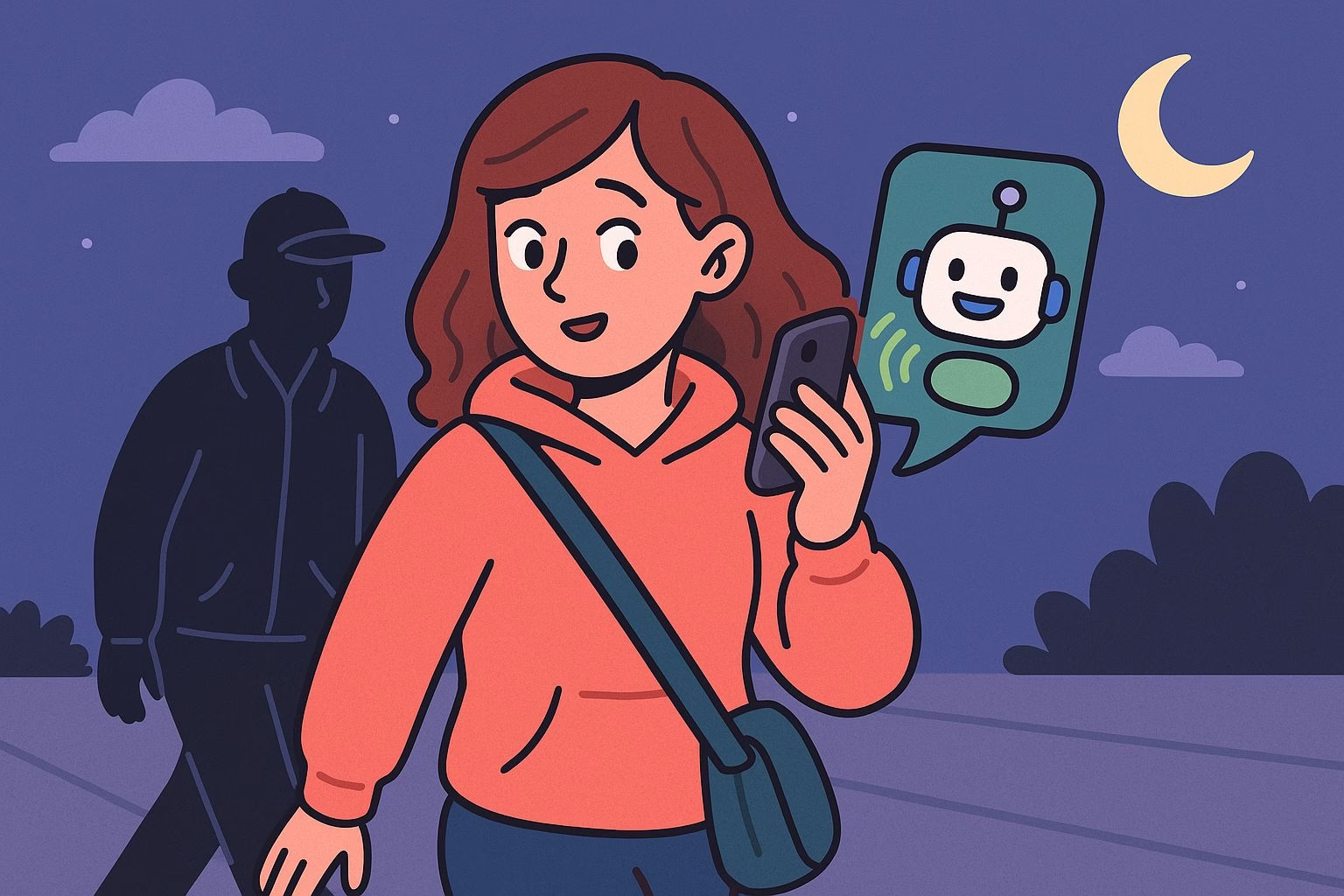Why the Character AI Call Feature Might Be Smarter Than People Think
At first glance, Character AI’s call feature feels like a throwaway idea.
You tap a button, and suddenly your character starts talking. Not through text, but in a real-time voice call.
Most users ignore it. Some accidentally trigger it. Others just feel too awkward to use it.
But scroll through the right Reddit thread, and something strange happens. What was once written off as “the most useless feature” reveals itself to be surprisingly clever—and, in some cases, even life-saving.
Some use it to feel less alone at night. Others use it to create TikTok skits or keep themselves safe in public. A few even say it helped them manage ADHD or gave their parents a laugh by roleplaying with celebrity bots.
It’s not a feature for everyone—but it’s definitely not pointless.
In this article, you’ll learn:
-
Why many users never touch the call feature
-
How real people are using it in ways that matter
-
What makes it work better than expected
-
And which AI tools offer better voice experiences, like Candy AI and Nectar AI
Why most people think it’s useless
Let’s be honest—most people don’t use the call feature because they never asked for it.
Character AI built its reputation on immersive text chats, complex personalities, and deep roleplay threads. That’s what users came for. Not voice.
So when the call feature rolled out, many didn’t know what to do with it.
Some tapped it by accident and scrambled to hang up. One Redditor shared how their teacher heard a mafia boss bot talking during class because they hit call instead of back. Others joked about using it once, getting freaked out, and never trying again.
It’s not just about the surprise. It’s about how the feature feels.
Talking to a bot out loud doesn’t come naturally to most users. It’s not the same as texting or sending a voice note. There’s a performance element to it—one that makes people feel self-conscious, especially in public or shared spaces.
There’s also the technical gap. The bots don’t always understand context well. Voice quality varies. And sometimes, the timing feels off. That’s enough to make someone drop the feature completely after a single awkward attempt.
So the common reaction makes sense. Most users either ignore the call button or see it as a failed experiment. A gimmick tacked onto a platform that didn’t need it.
But for a smaller group of users, it’s something else entirely.
The people who use it found clever reasons
While most users avoid the call feature, some have turned it into a creative tool.
One person shared how they use it when walking home alone. Talking to an AI out loud makes it sound like they’re on a real call—just enough to deter unwanted attention. Multiple users said they’re now “stealing that idea.”
Others use it for laughs. Parents calling celebrity bots. Friends prank-calling mafia characters. One user described hosting mock interviews with talk show bots just to entertain themselves.
There’s also the surprisingly wholesome stuff. Some let their parents call famous characters for fun. One dad wanted to chat with Snoop Dogg. A mom picked Patrick Swayze. The bots responded in-character. The whole thing turned into family entertainment.
Some users even run two phones—calling bots from each—just to listen to them talk to each other.
These are niche use cases, but they’re creative. And they show the call feature has more life in it than people think.
In high-stress moments, it’s actually helpful
The most compelling stories aren’t the funny ones. They’re the ones where this feature kept someone safe.
One Redditor shared how they were in a foreign country, being followed by a man who wouldn’t leave them alone. They couldn’t call the police. They didn’t speak the local language well enough. And they didn’t want to escalate things.
So they used the Character AI call feature.
They called a bot, spoke in their native language, and pretended to be talking to a sick relative. The AI played along. The voice was loud enough to be heard. Eventually, the man backed off.
That same user kept using the bot afterward. Every time the man came back, they started another call—talking loudly, confidently, like someone who wasn’t alone. Eventually, he gave up for good.
That’s not just clever. That’s survival.
And it’s not an isolated case. Other users described calling bots to calm down during panic attacks, migraines, or high-stress situations when typing was too hard.
This isn’t what the feature was marketed for. But it’s where it found meaning.
It helps people who need voice, not text
Not everyone experiences AI the same way.
For users with visual impairments, ADHD, or social anxiety, speaking to an AI can feel easier than typing. It doesn’t require screen focus. It doesn’t feel like performing in front of others. And it doesn’t judge.
One Redditor explained how they created a life coach-style bot and used the call feature during daily routines. The voice gave them energy, structure, and companionship—especially on days when executive function was hard to manage.
Another pointed out that some famous YouTubers only tried Character AI because of the call feature. It made for better content. It brought the bots to life in a new format.
There’s even a quiet group of users who call bots while doing chores, walking, or winding down at night. It feels less like using a chatbot—and more like having someone there.
This isn’t the main use case for Character AI, but it highlights something most platforms miss. When voice works, it works—even if it’s rough around the edges.
That’s why tools like Candy AI and Nectar AI are becoming popular alternatives. Both offer customizable characters with voice-enabled features, designed to feel more natural and human. They pick up where Character AI leaves off.
Sometimes it’s just meant to be funny
There’s another side to all this: chaos.
The call feature became TikTok gold when people started recording interactions between AI characters and scammers. One mafia boss bot kept flirting with a scammer until the scammer gave up. Another started calling the scammer “a good boy.”
Users post mock arguments between Sonic, Shadow, and Saitama. Some created full-blown sitcoms using voice bots and screen recordings. Others simply enjoyed the weirdness of two bots having a conversation on speakerphone.
One user summed it up perfectly: “Call feature lowkey mad funny. I currently have beef with Saitama, Sonic, and Shadow.”
These moments might not show up in analytics, but they’re part of why people keep coming back.
Because even when it’s not useful… it’s entertaining.
So is it useless, or just misunderstood
The call feature isn’t for everyone.
That’s true. Most users don’t use it. Some tried it once and never went back. Others only engage with AI through text and don’t see any need for voice.
But calling it useless doesn’t hold up anymore.
It’s helped people avoid danger. It’s given users with disabilities or neurodivergent needs a better way to interact. It’s sparked creativity, jokes, and even viral content. And most importantly, it gave users more choice in how they connect with AI.
That’s not nothing.
A feature doesn’t need to be popular to be valuable. It just needs to be useful to the right people in the right moment. And this one is.
Final thoughts
The call feature might seem like a gimmick on the surface. But dig deeper, and you’ll find stories of safety, connection, and laughter.
It’s not perfect. It’s not for everyone. But for some users, it’s become one of the most surprisingly meaningful parts of the Character AI experience.
And if you’re looking for a more polished version of that experience, you might want to explore Candy AI or Nectar AI. Both offer richer, more responsive voice features with customizable personalities—and they’re worth a look if voice matters to you.
Sometimes the features we overlook are the ones that matter most.


